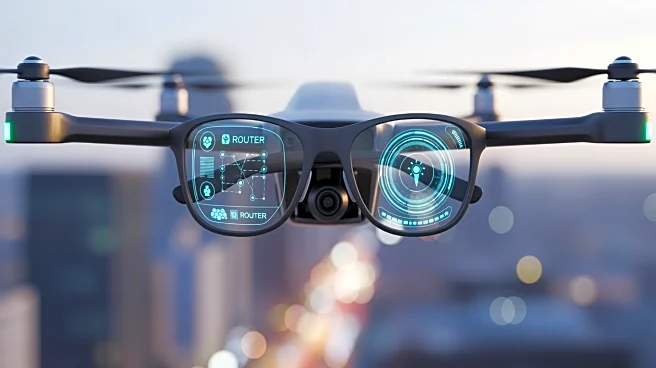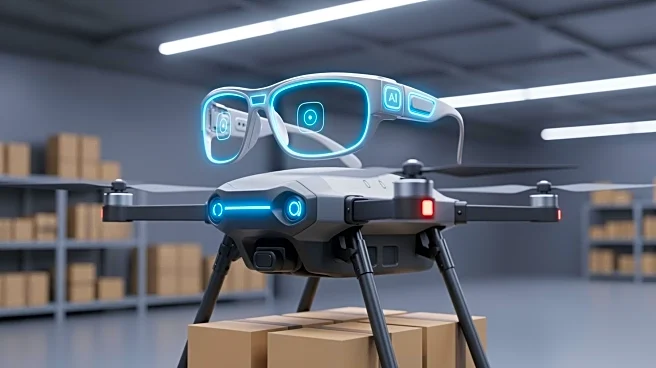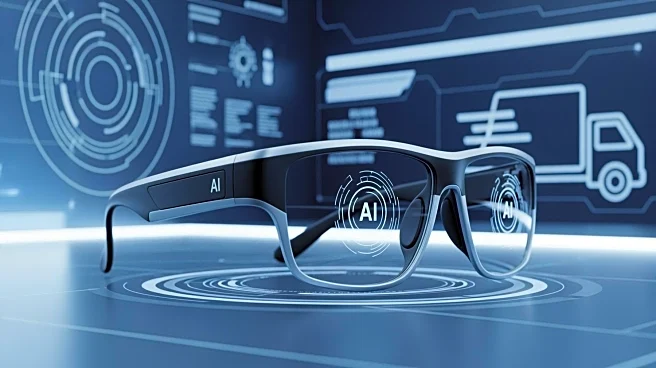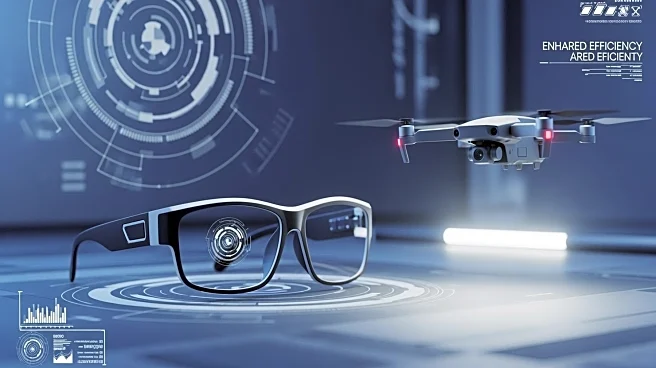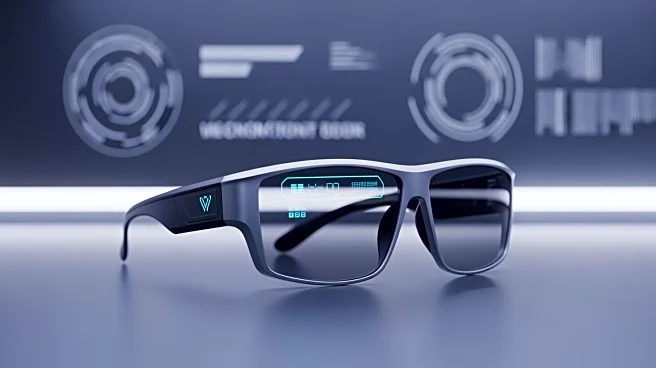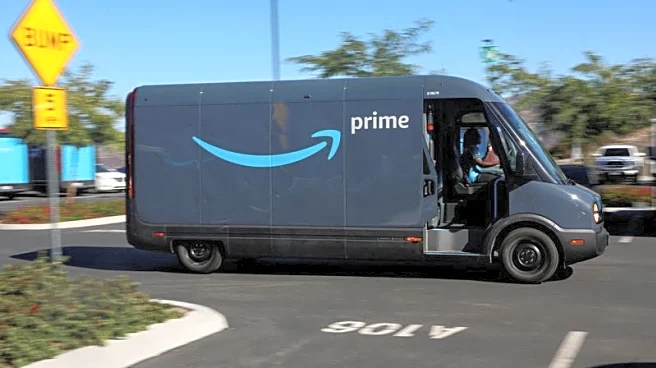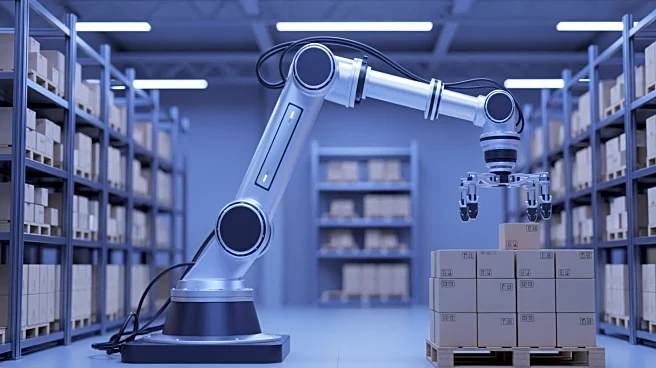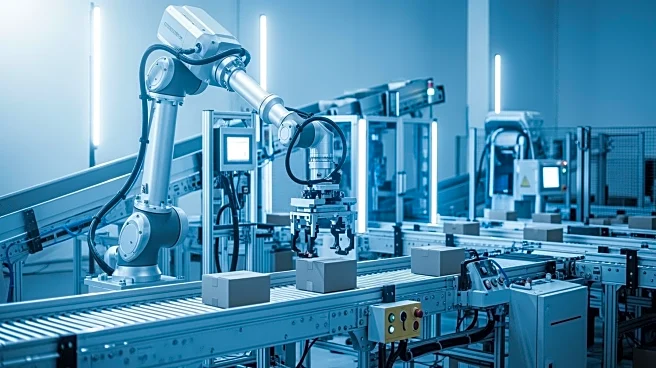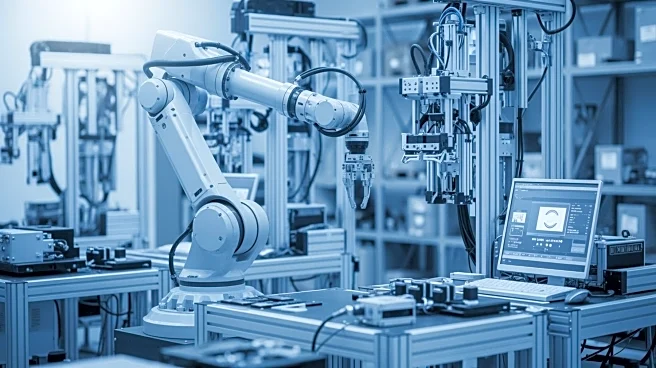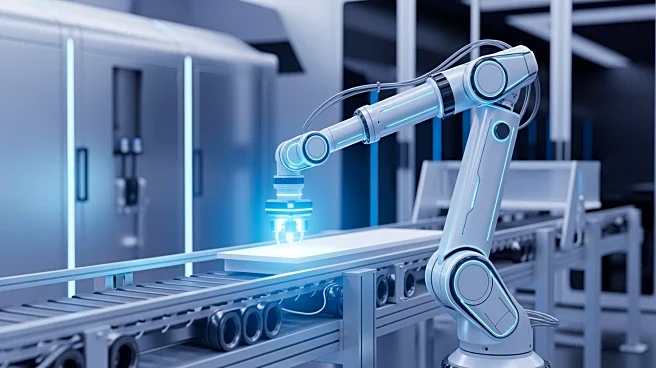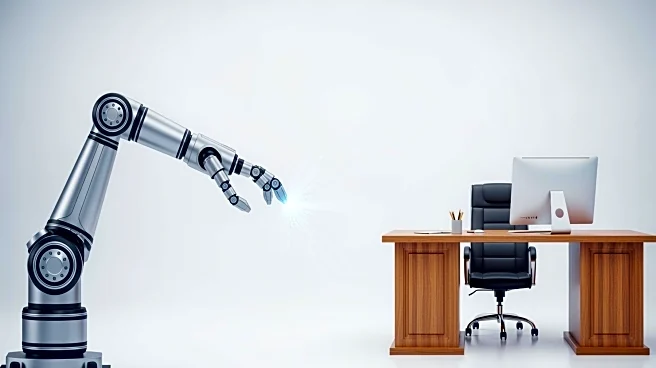What's Happening?
Amazon is in the final testing stages of its new AI-powered smart glasses designed for delivery drivers. These glasses aim to simplify the delivery process by reducing the need for drivers to check their
phones and surroundings constantly. The glasses feature a heads-up display that activates upon parking, guiding drivers through package scanning, navigation, and delivery proof photography. The technology is being tested in select North American markets, with plans for future enhancements such as real-time defect detection and hazard alerts. The glasses are paired with a controller on the delivery vest, allowing for battery replacement and operational control.
Why It's Important?
The rollout of AI smart glasses for delivery drivers marks a significant step in Amazon's efforts to enhance delivery efficiency and driver safety. By minimizing distractions and streamlining tasks, the glasses could lead to faster and more accurate deliveries, benefiting both Amazon and its customers. This innovation reflects Amazon's commitment to leveraging technology to improve logistics operations, potentially setting a precedent for other companies in the industry. Drivers may experience reduced stress and increased safety, while customers could enjoy more reliable delivery services.
What's Next?
Amazon plans to continue testing the smart glasses in North America, gathering feedback to refine the technology further. Future versions may include advanced features like defect detection and hazard alerts, enhancing the glasses' functionality. As the technology develops, it could see wider adoption across Amazon's delivery network, influencing other logistics companies to explore similar innovations. Stakeholders, including drivers and customers, will likely watch the rollout closely to evaluate its impact on delivery operations and safety.
Beyond the Headlines
The introduction of AI smart glasses for delivery drivers raises potential ethical and privacy concerns, as the technology may involve data collection and monitoring. Additionally, the shift towards automated delivery solutions could impact driver employment and training, as technology increasingly takes over tasks traditionally performed by humans. The cultural implications of technology-driven delivery services may also affect consumer expectations, driving demand for faster and more efficient solutions.
